Unbeknownst to the millions who pass through them every year, the mountains of southwestern British Columbia form an active volcanic region thousands of years in the making that could be on the brink of cataclysmic change.

IN JULY 2016, helicopter pilot Hannibal Preto was flying above Mount Meager, about 40 kilometres north up the Lillooet River valley from Pemberton, B.C., when he caught the whiff of rotten eggs.
A few minutes later, he took his passenger, a wildlife biologist conducting a mountain goat survey, higher up the peak, where Preto spotted vapour emanating from a hole in a glacier. “Combined with the sulphurous smell from earlier,” says Preto, “it was clear to me that we were looking at fumaroles.”
For Preto, who is a graduate of the University of Victoria’s geology and earth sciences program, it was an exciting discovery — or rather rediscovery. Anecdotal reports dating back to the 1930s from mountaineers and other adventurers had also noted the telltale sulphurous rotten-egg smell in the vicinity. Preto’s sighting was a reminder that although these mountains appear docile today, the forces of volcanism that shaped this rugged corner of southwestern British Columbia are still very much alive.
A YEAR AFTER Preto’s sighting, I’m perched on the brink of Keyhole Falls, where the Lillooet River squeezes through a slot canyon that’s barely two arm’s-lengths wide and over a 100-metre precipice into a horseshoe-shaped canyon. Across the river, avalanche paths plunge from the 2,680-metre massif of Mount Meager, one of the northernmost in a chain of volcanoes known as the Garibaldi Volcanic Belt, which itself is the northernmost extension of the Cascade volcanic arc that includes prominent volcanoes in the United States such as mounts Baker, St. Helens, Rainier, Adams and Shasta. Somewhere high above me, pungent gas escapes through a crack in the ice — the exhalations of a sleeping giant.
Esta historia es de la edición March/April 2019 de Canadian Geographic.
Comience su prueba gratuita de Magzter GOLD de 7 días para acceder a miles de historias premium seleccionadas y a más de 9,000 revistas y periódicos.
Ya eres suscriptor ? Conectar
Esta historia es de la edición March/April 2019 de Canadian Geographic.
Comience su prueba gratuita de Magzter GOLD de 7 días para acceder a miles de historias premium seleccionadas y a más de 9,000 revistas y periódicos.
Ya eres suscriptor? Conectar
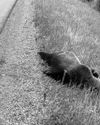
ANIMAL XING
THIS PAST SUMMER AN AMBITIOUS WILDLIFE UNDER/OVERPASS SYSTEM BROKE GROUND IN B.C. ON A DEADLY STRETCH OF HIGHWAY JUST WEST OF THE ALBERTA BORDER. HERE’S HOW IT HAPPENED.
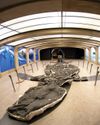
Unearthing a giant
Almost 30 years ago, paleontologist Elizabeth “Betsy” Nicholls made a discovery of colossal proportions
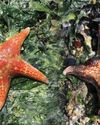
WE DID THIS
AS THE IMPACTS OF GLOBAL WARMING BECOME INCREASINGLY EVIDENT, THE CONNECTIONS TO BIODIVERSITY LOSS ARE HARD TO IGNORE. CAN THIS FALL’S TWO KEY INTERNATIONAL CONFERENCES POINT US TO A NATURE-POSITIVE FUTURE?
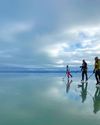
The COOLEST COUNTRY
“The coolest country” celebrates the wonders of winter with an all-Canadian theme. The 20-page travel planner includes a bucket list from travel writer Robin Esrock, steamy spa ideas, ice fishing destinations, festival fun, northern itineraries and more!
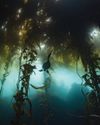
KEEPER of the SEA
FROM BEING LABELLED DEVIL’S APRON BY FRUSTRATED FISHERMEN TO BEING LAUDED AS A SUSTAINABLE FOOD SOLUTION: HOW KELP’S POTENTIAL IS BEING REALIZED, JUST AS SCIENTISTS LEARN IT’S DECLINING
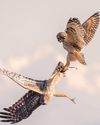
WILD THINGS
WILD CANADIAN GEOGRAPHIC PRESENTS THE WINNERS OF ITS ANNUAL CANADIAN WILDLIFE PHOTOGRAPHY OF THE YEAR COMPETITION

AN EMPTY LANDSCAPE
AFTER MORE THAN A MILLION YEARS ON EARTH, CARIBOU ARE UNDER THREAT OF GLOBAL EXTINCTION. THE PRECIPITOUS DECLINE OF THE ONCE MIGHTY HERDS IS A TRAGEDY THAT IS HARD TO WATCH — AND EVEN HARDER TO REVERSE.
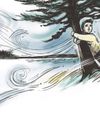
NORTHERN EXPOSURE
BON INTO A CARIBOU-HUNTING CREE FAMILY IN NORTHERN MANITOBA, ACCLAIMED PLAYWRIGHT AND NOVELIST. TOMSON HIGHWAYS PAYS TRIBUTE TO THE MAGICAL WORLD OF HIS CHILDHOOD IN PERMANENT ASTONISHMENT
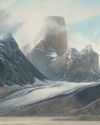
INTO THE ARCTIC
CANADIAN PAINTER AND FILMMAKER CORY TRÉPANIER EXPLORES THE SUBLIME AND RAPIDLY CHANGING CANADIAN ARCTIC

Under the ice
Until the last decade, we knew little about what lay beneath the Arctic ice. Now scientists and explorers are shedding light on this vanishing world.